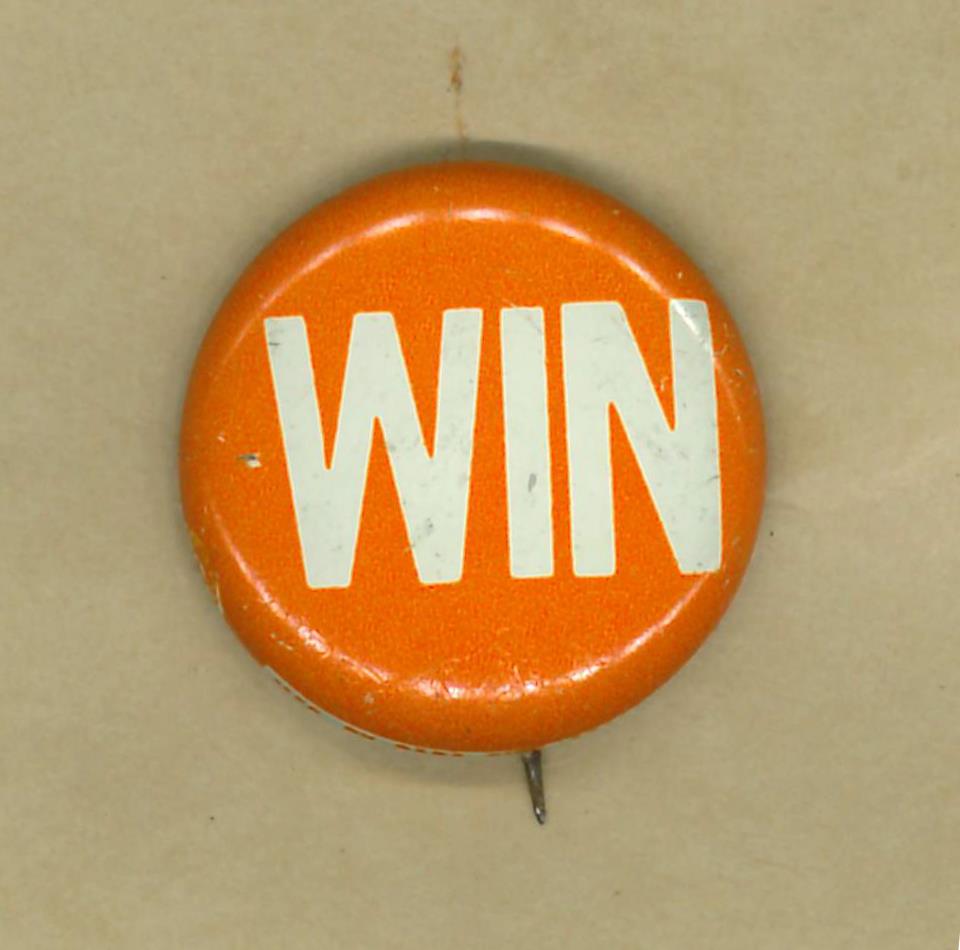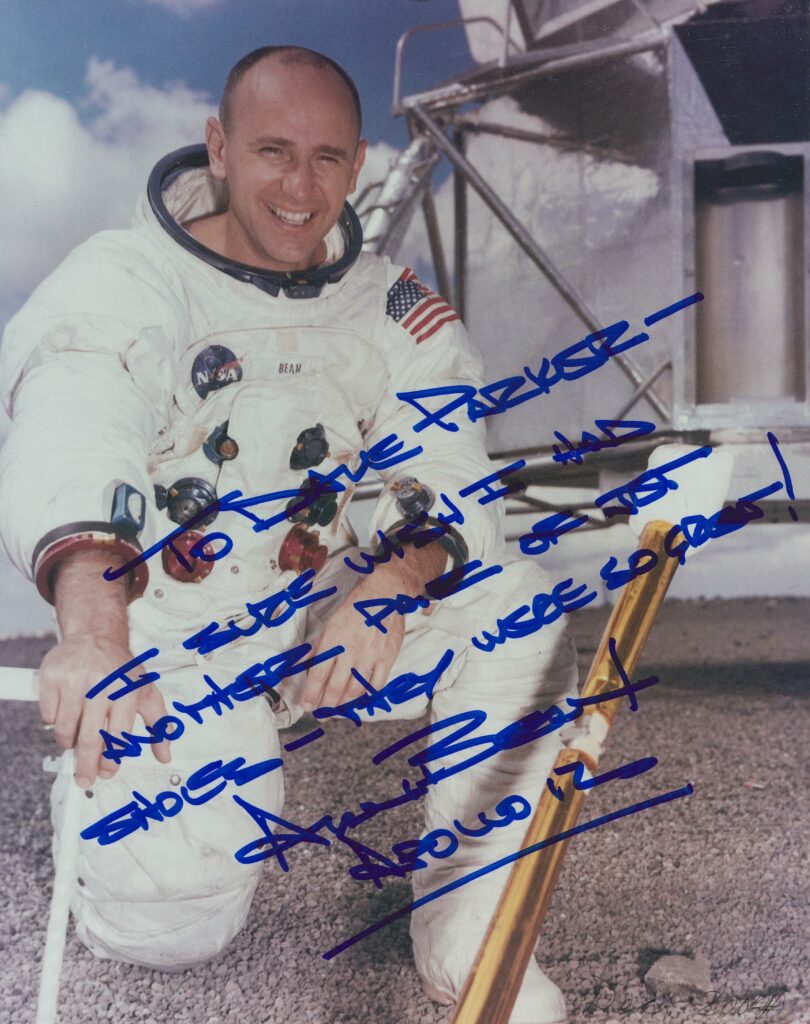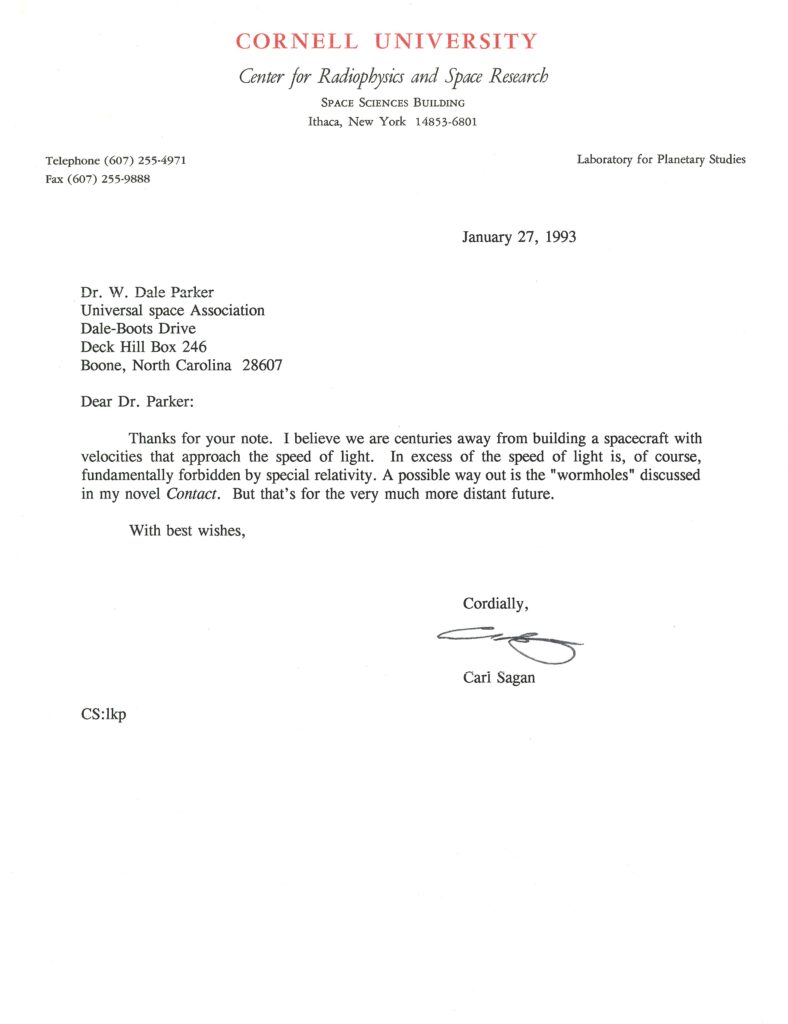Behind virtually any collection of personal papers is an ego, a voice saying, I was here. I mattered. Such collections can be indispensable resources in chronicling the lives of the famous and infamous or in offering insights into a particular time or topic. While history may greatly benefit from these collections, however, it is often to self-aggrandizement, not altruism, that their existence is owed. In the case of the W. Dale Parker Papers (Ms1989-093), we see that egotism taken to an extreme. In more than 20 years of arranging and describing personal papers, Ive never run across a collection quite like it.
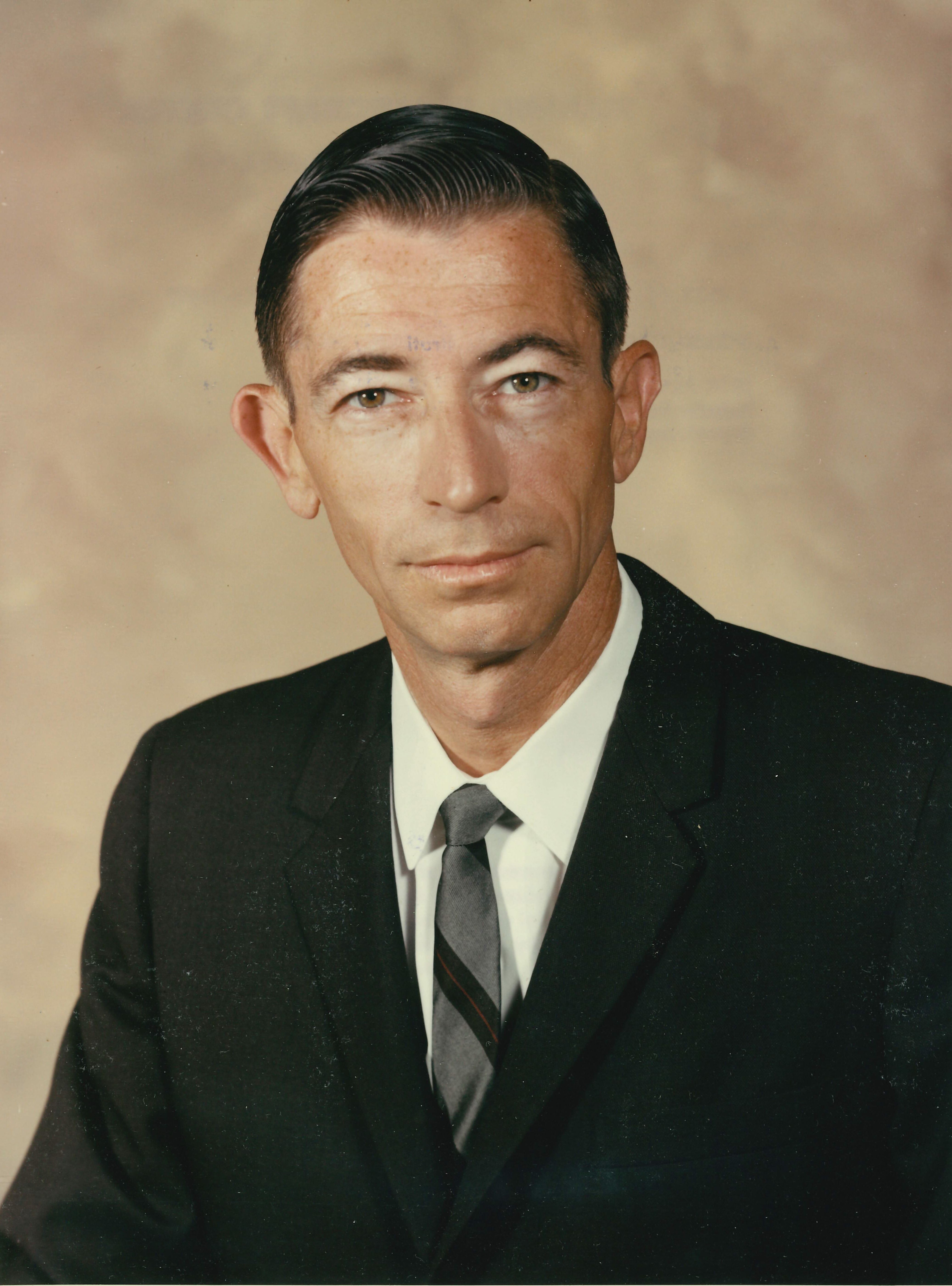
Born in Portsmouth, Virginia, Dale Parker (1925-2007) attended the College of William & Mary for a year before being dismissed for poor grades. (He would remain devoted to the school, however, and invariably identified himself as an alumnus of the class of 1949.) During World War II, Parker served in the U. S. Coast Guard for 16 months before being discharged, apparently for medical reasons. Afterward, he took a handful of courses at various colleges, and, following 10 years of coursework, graduated from the industrial engineering program of International Correspondence Schools (ICS). (Though he would later claim to have earned a doctoral degree and thus frequently referred to himself as Dr. W. Dale Parker, Parkers 1968 doctorate from a now-defunct Mexican university was strictly honorary, bestowed upon him for unknown reasons. Likewise, though he sometimes described himself as an aerospace engineer, there is no evidence within the collection that Parker held any educational credentials beyond the ICS industrial engineering degree.)
After working for five years as a draftsman at the Naval Proving Ground, Parker became a plant engineer at General Motors’ Wilmington, Delaware plant in 1951, later serving as an assistant director in charge of public relations and counseling. He worked as a management specialist for General Dynamics Astronautics from 1961 until 1964, when he was hired by NASA (an agency in which his brother Otis already worked as an aerospace engineer) as a management specialist for Project Gemini. (He often credited himself with bringing Gemini from nine months behind schedule to nine months ahead of schedule within nine months.) He retired from NASA in 1969, records suggesting that the retirement was on a disability claim.
Parker remained engaged in a number of other activities after retirement: working as a pro bono counselor; volunteering with civic organizations and charities; and maintaining memberships in a number of fraternal and masonic organizations. He also incorporated Multiple Services, a small, nebulous business; tried his hand at several other short-lived business enterprises; and self-published several books.
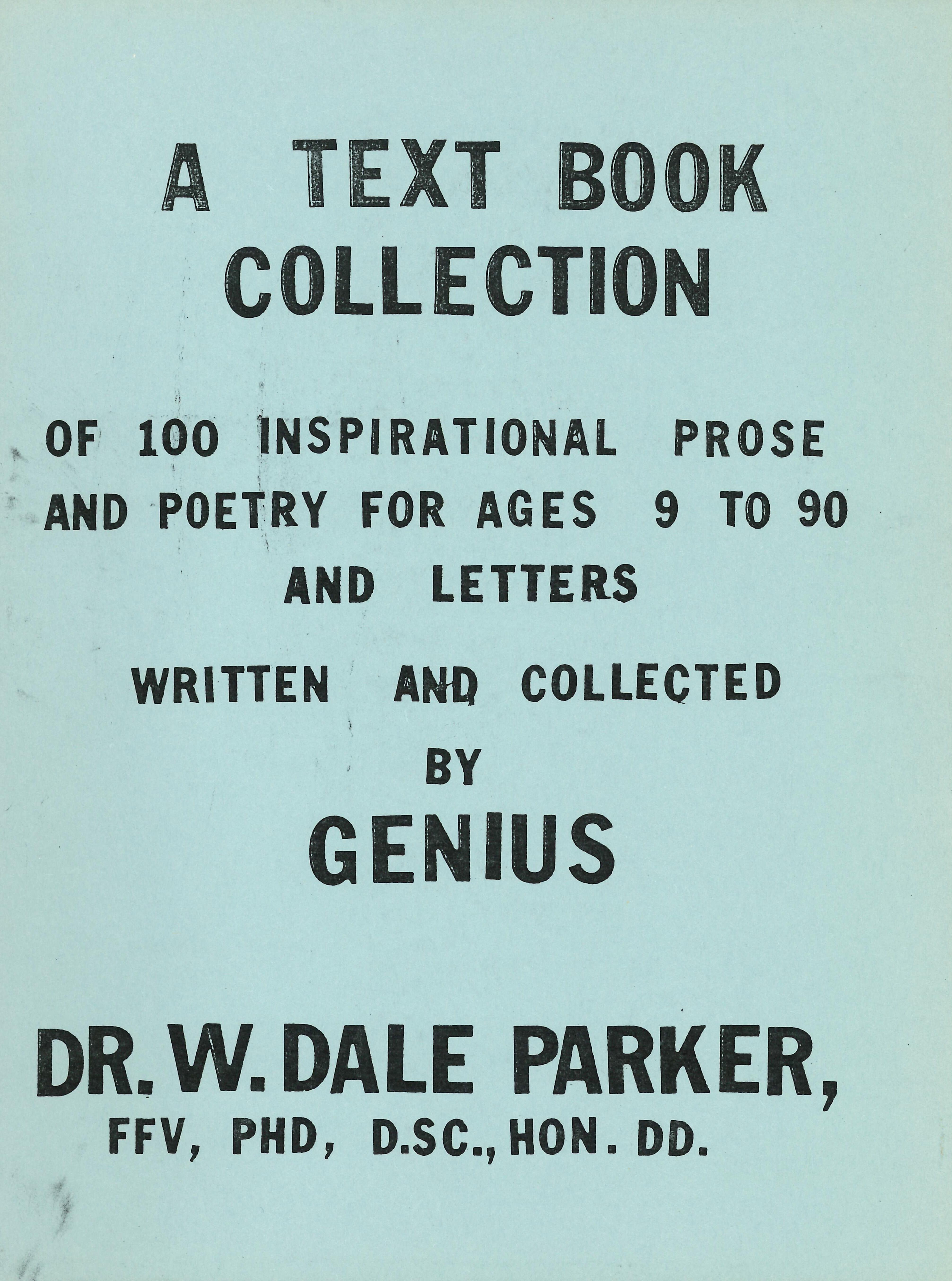
Parkers papers were donated to Virginia Tech’s Special Collections in several installments beginning in the late 1980s, when the department was aggressively building its collections. Due to his work at NASA, Parkers papers seemed a good fit for the departments Archives of American Aerospace Exploration, where they would share shelf space with those of such figures as Apollo astronaut Michael Collins and NASA flight director Chris Kraft.
Unfortunately, Parkers papers have very little to do with the topic of space exploration and very much to do with the topic of Dale Parker. With the exception of bills and invoices, Parker seems to have retained anything that had his name on it. A large portion of the collection consists of such ephemera as membership cards, credit cards, and appointment calendars. Also included are such self-exploring items as personality quizzes, astrological readings, handwriting analysesanything that could possibly be used to help future historians to understand and explain the unique and powerful mind of Dale Parker. In the collections many folders we learn of his short-lived 1977 Florida gubernatorial campaign; his ill-fated attempts to manufacture and market such inventions as the Amy Carter Peanut Doll and the Space Exploration and Technology Trivia Game; and his acquaintance with such celebrities as Bob Hope and Johnny Weissmuller. Prominent in the collection are the many scrapbooks that Parker compiled, including his scrapbook magnum opus: a pair of giant albums in the shape of the state of Delaware. Meanwhile, the records of his work at NASA comprise just a single folder (though, admittedly, the collection contains a handful of other folders about Project Gemini and NASA history).
Given that the focus of Dale Parkers papers is largely on himself as an individual, providing few insights into Project Gemini, the most noteworthy period of his career, we might be forgiven for thinking the collection unworthy of any attention. Within the collection, however, can be found a number of interesting items.
The former NASA employee took painstaking efforts in collecting materials relating to his youngest daughter, Jacquelyn Parker, the first female graduate of the U. S. Test Pilot School. Included are items detailing her life, of interest for their relevance to both aviation and womens history. Also of interest are hundreds of letters from Dale Parkers pen pals in Belarus and other former Soviet states. Written from 1993 to 2006, many of the letters discuss cultural, political, and economic changes following the Soviet collapse; the balance of newfound freedoms against economic hardships; international relations; and the Chernobyl disaster.
Of all the accolades that Parker awarded himself, perhaps none was more important to him than that of political insider. A prolific correspondent, he frequently wrote to politicians to offer advice and ask favors. Seemingly guided not so much by ideology or personal loyalty than an attraction to power and a compulsive need to be heard, Parker donated to both major political parties and indiscriminately offered his advice. Though he did not wield the political power that he claimed (often billing himself as a presidential advisor and White House veteran), Parker was in fact personally acquainted with a number of prominent politicians and had a knacklargely through his monetary donationsfor getting their attention. (In 1977, Parker mounted his own short-lived, independent Florida gubernatorial campaign and earned some press for his unconventional method of recruiting a running mate through newspaper advertisements.) The collections political series provides something of an overview of American political issues and personalities of the late 20th century. Included among the printed material are letters personally addressed to Parker. In addition to office-holders, the collection contains personal notes from presidential family and staff members.
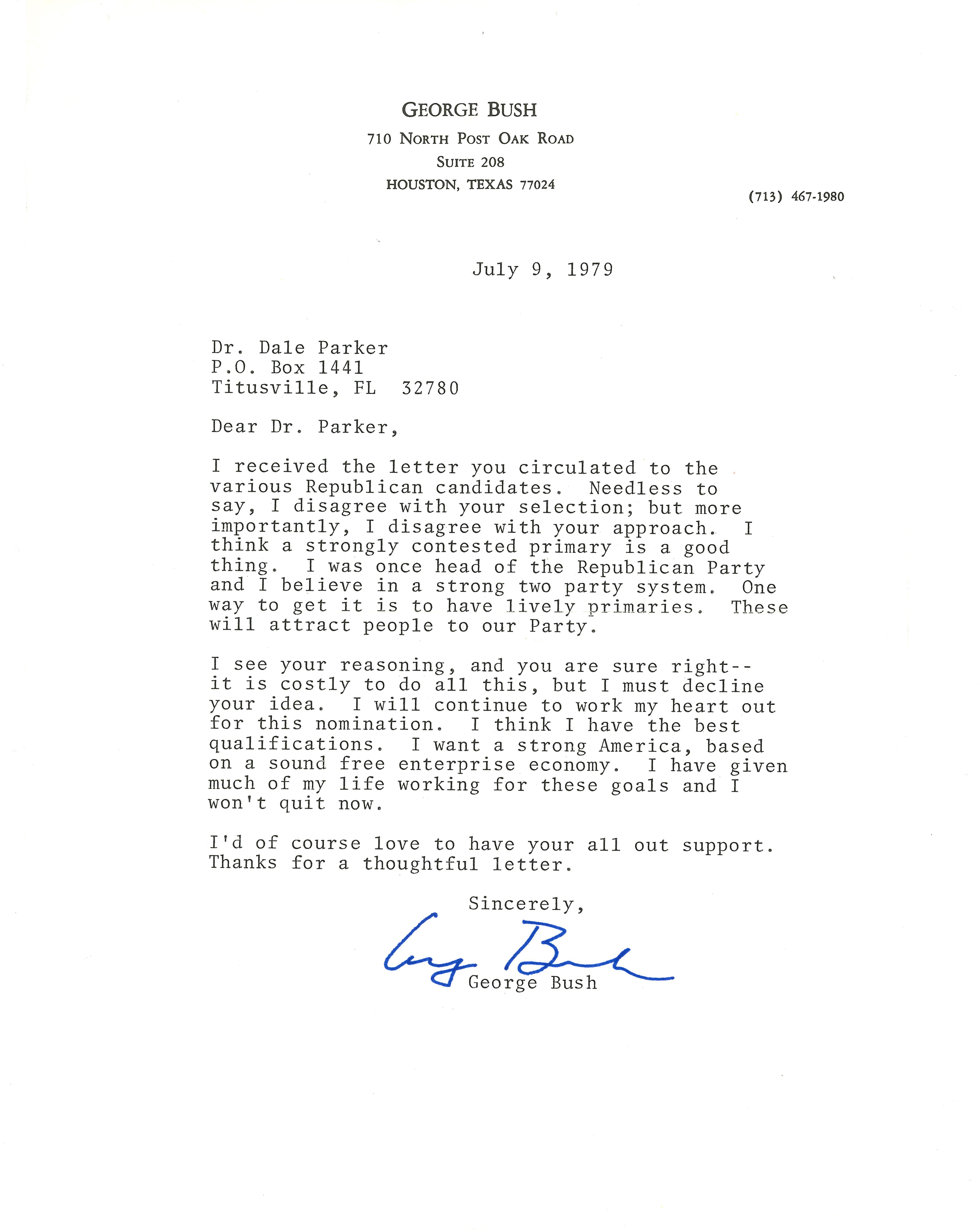
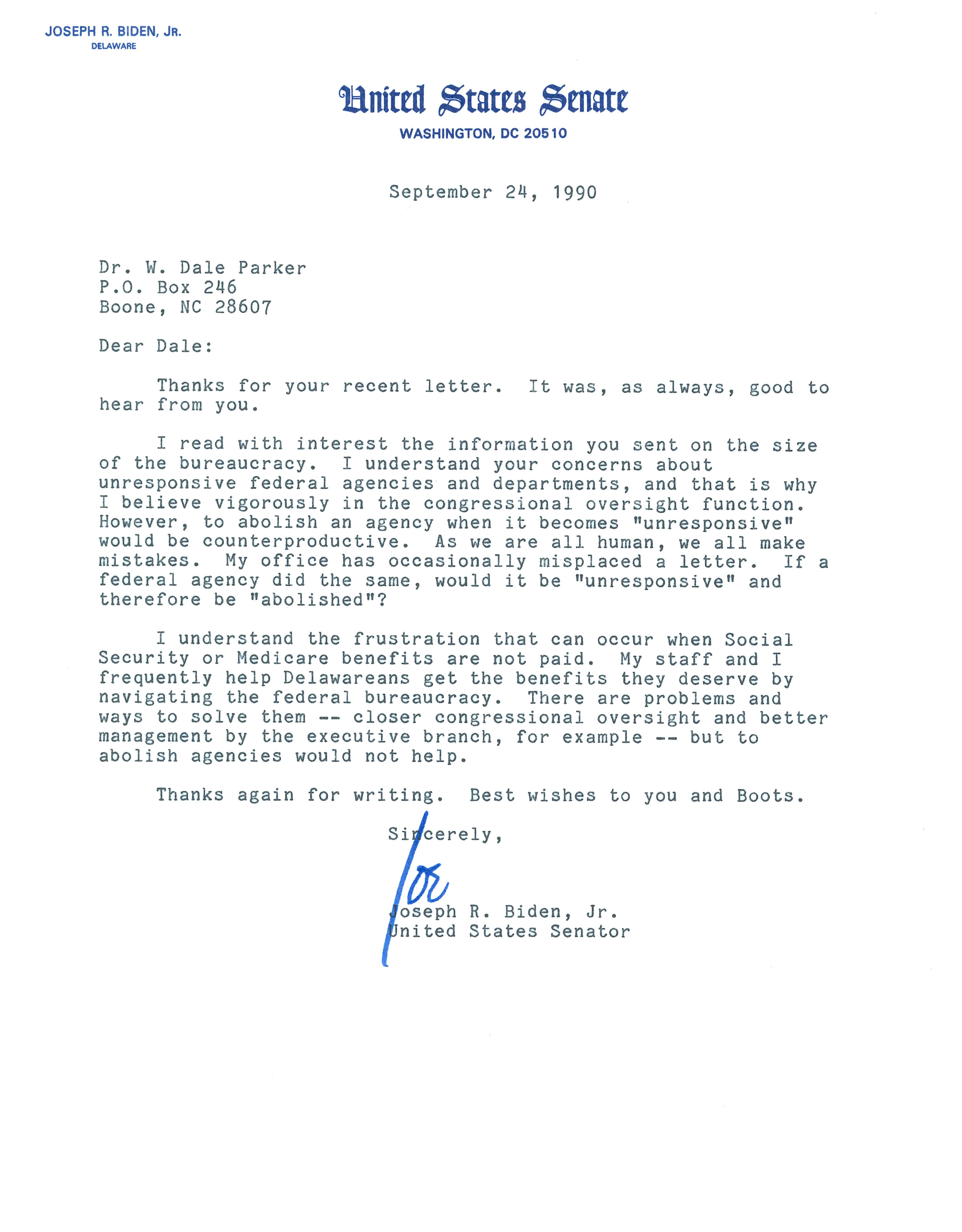
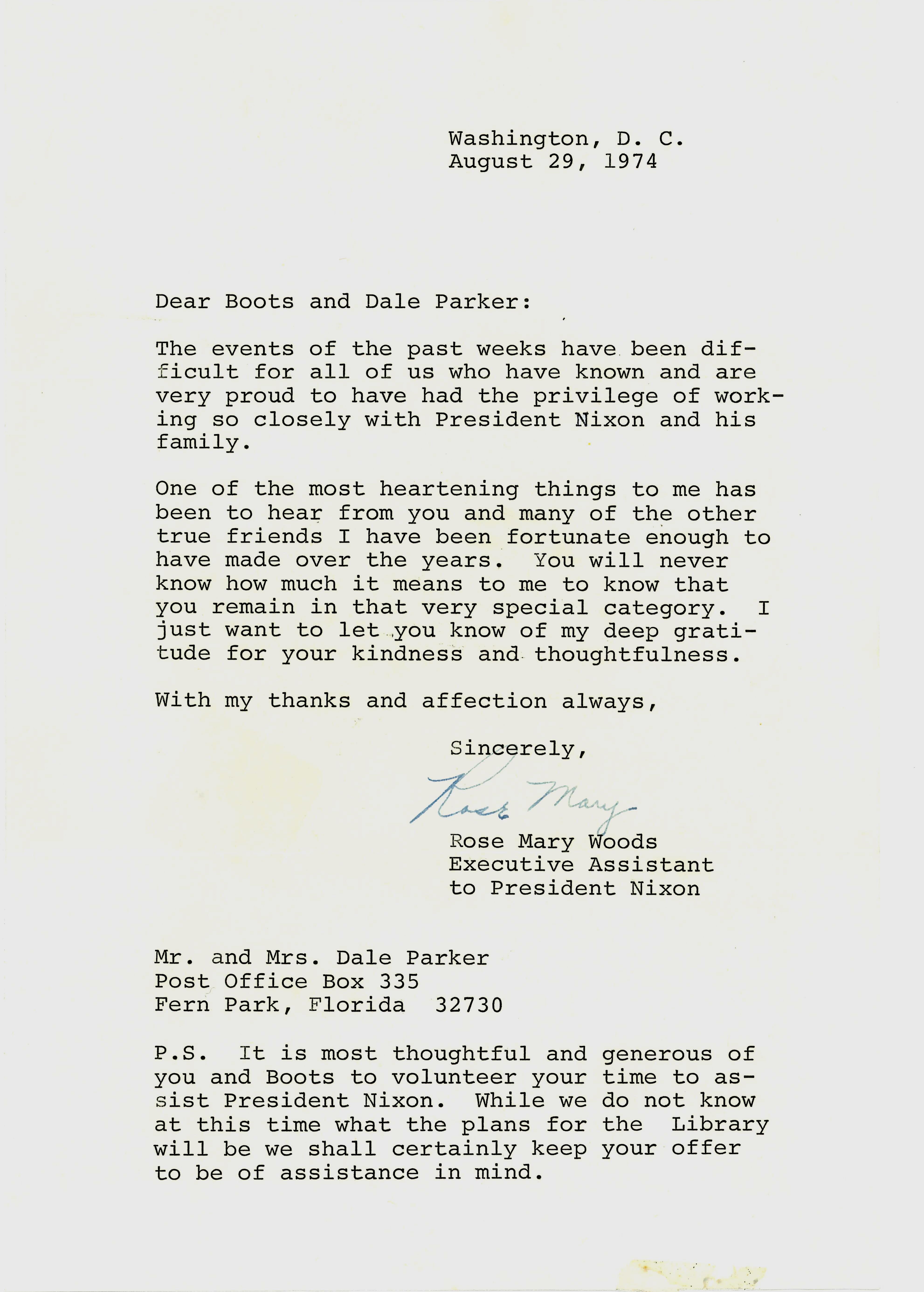
The collection also contains a number of individual items that, while having no great research value, are of interest for their association with a specific time, activity, or person. A WIN (Whip Inflation Now) button from the Ford era; an autographed photo of astronaut Alan Bean; a letter from Carl Sagan regarding the prospect of faster-than-light space travel: these are among the collection’s many disparate items with a little tale to tell.
So, while we cannot claim that the W. Dale Parker Papers are an invaluable resource for the scholar of aerospace exploration, they do contain items of lasting interest, some that have legitimate research value and some that could be used as exhibit pieces or instructional materials in a classroom setting.
If nothing else, however, the Dale Parker Papers would be of interest to anybody writing a biography of Dale Parker, and perhaps that was all he ever wanted.
(You can learn more about Dale Parker and his papers by seeing the collection’s finding aid here.)
